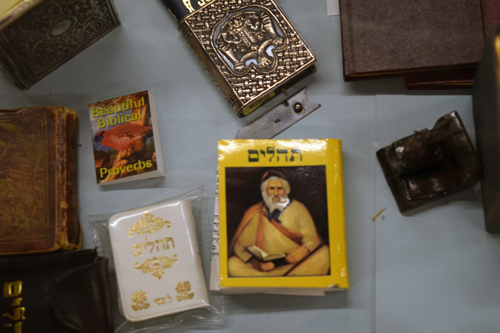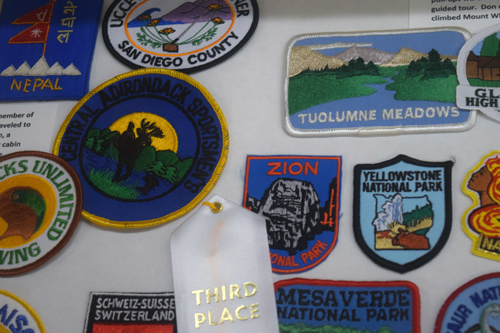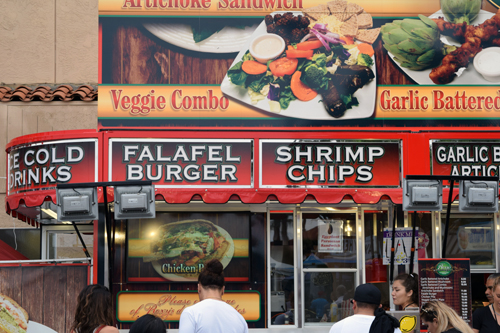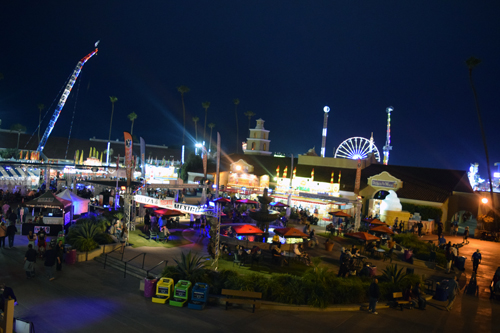
By Donald H. Harrison
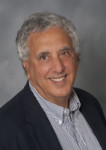
DEL MAR, California – At the San Diego County Fair, there is always an exhibition of interesting collections – a collection of collections, you might say. Here people exhibit concert passes; autographs; Comic-Con paraphernalia from over the years; crafts; matchbooks; and almost anything else that might catch someone’s fancy. As for me, I’m a gleaner. I pore over other people’s collections looking for strands of Judaica. Knowing that “There is a Jewish story everywhere,” I soon find some.
Given that the theme this year is “Mad About the Fair,” I supposed correctly on opening day on Friday, June 3, that there would be numerous crafts and artworks dedicated to “Alice’s Adventures in Wonderland” author Lewis Carroll and perhaps even some sly references to Carroll’s real-life persona Charles Lutwidge Dodgson. Given that one of Carroll’s most famous characters was the Mad Hatter, I had dared to hope I would find a collection of hats, and within it, perhaps, some knitted kippahs, black yarmulkes, and furry shtreimels, but no such luck.
One of the first exhibit cases that caught my eye featured miniature Bibles and various religious tracts. Though overall this particular collection is clearly Christian in theme, I did find two books of tehillim — Hebrew for psalms.
However, it was the world of entertainment–not religion–that provided the most pathways to Jewish stories.
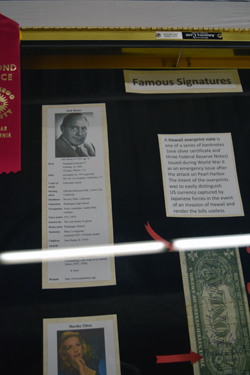 For example, one signature collector had snagged an autograph from the internationally famous comedian whose birth name was Benjamin Kubelsky, but whom the world came to love as Jack Benny. At a Passover seder in Vancouver, he met his future wife Sadie Marks, who became better known to the world as Mary Livingstone.
For example, one signature collector had snagged an autograph from the internationally famous comedian whose birth name was Benjamin Kubelsky, but whom the world came to love as Jack Benny. At a Passover seder in Vancouver, he met his future wife Sadie Marks, who became better known to the world as Mary Livingstone.
Nearby in the same collection is a dollar bill, and more important to me than the signature scrawled on it, was the cluster of 13 stars shaped into a Magen David above the head of the bald eagle, which is America’s national bird. Some people like to believe that the Jewish star design was a tribute to Haym Salomon, the financier who helped provide money to support the Continental Army led by George Washington, but there is no proof of this tale. Perhaps the star symbolizes the fact that so many of America’s ideals are derived from concepts first set down in the Torah.
A nearby collection was devoted to a “person” born with the Hebrew name Kal-El, which might be translated “Voice of God.” He became known by the name “Superman.” The creation of writer Jerry Siegel and illustrator Joe Shuster, the comic books’ Superman, like Moses, was put into a vessel by his mother and sent away to protect him from otherwise certain death. He would become a symbol of strength and uprightness in a world turned dreadful by the Nazi German dictator Adolf Hitler. In a rebuke to Nazi ideology of a super race, based on genetics, Superman was super because of his physical and moral strength.
Another figure with Jewish roots from the world of entertainment was Elvis Presley, whose great grandmother was Jewish. If one follows the halachic logic that our religion is determined by our mother’s, so too were Elvis’s grandmother and mother Jewish, and, yes, Elvis himself. Presley only learned late in his life about his maternal Jewish roots, but acknowledging them, he placed a Jewish star on the grave of his mother.
Another piece of “Judaica” could be found in a collection of patches from famous parks. One of them was from Zion National Park, which in 1909 was named Mukuntuweap National Park by U.S. President William Howard Taft based on what Paiute Indians, who had lived there before the Mormons, had called it. But as long ago as 1863, the place had been named Zion Canyon by settler Isaac Behunin.
The Mukuntuweap name, roughly translated as “straight canyon” or “straight arrow” was rescinded in 1918 by Horace Albright, then acting director of the newly created National Park Service and renamed as Zion National Park. Whereas in Judaism, Zion refers to the site of the First and Second Temple (now occupied by the Dome of the Rock and the Al-Aqsa Mosque), Mormons considered their realm of Deseret to be the new Zion, or new Jerusalem.
The exploration of other people’s collections completed, I returned to the midway, where I saw a restaurant offering felafel, a Middle Eastern dish that has become ubiquitous in Israel. But this was a felafel stand one would be very unlikely to encounter in Israel. Its sign also advertised another, definitely unkosher specialty, shrimp!
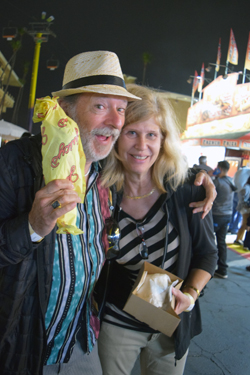
From my point of view, some of the best Jewish experiences at the San Diego County Fair are not in the exhibit cases, nor the rides, nor the various games at which one can win stuffed animals and other prizes. The best experiences are in encounters one might have with fellow Jews. For example, I had the pleasure of seeing Rocky Smolin and Marsha Sutton, husband and wife, at the fair.
Rocky, brandishing a wrapped-up turkey leg, is a computer whiz who authored How To Buy The Right Small Business Computer System way back in 1981 and has two other books to his credit. He owns Beach Access Software, a computer consulting firm, and when not dealing with cyberspace matters, he is an avid photographer and an upright bass player with three different bands.
Marsha covers education matters for the Del Mar Times and related community newspapers–a beat that takes her in many interesting directions. For example, covering a recent Bernie Sanders appearance on the football field of Rancho Buena Vista High School in Vista, she noted that the high school students in attendance, although too young to vote, were ecstatic about seeing the 74-year-old Jewish presidential candidate in the flesh.
In that article Marsha wrote:
“Some speculate that young voters have a more favorable view of socialism than older voters who remember the Cold War and have negative associations with socialist movements. The students I spoke with at the Sanders rally didn’t mention that specifically, but their concerns mirror the democratic socialist’s primary points: that the traditional two-party system has become corrupt, that government and politicians are controlled by wealthy contributors and lobbyists, and – perhaps as they see future prospects for successful careers and well-paying jobs dimming – that income inequality is growing to intolerable levels.”
Wherever you go, without looking too hard, you can find a Jewish tale.
*
Harrison is editor of San Diego Jewish World. He may be contacted via donald.harrison@sdjewishworld.com. Comments intended for publication in the space below MUST be accompanied by the letter writer’s first and last name and by his/ her city and state of residence (city and country for those outside the United States.)
